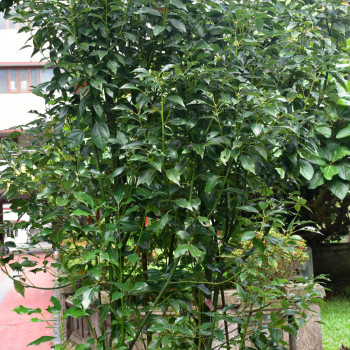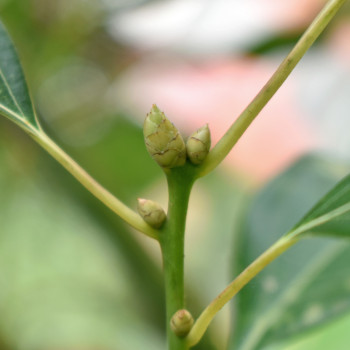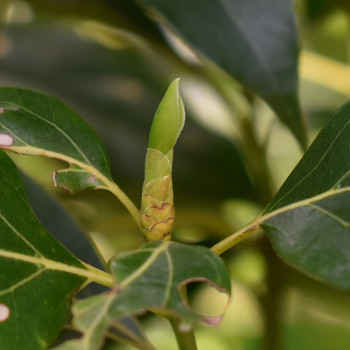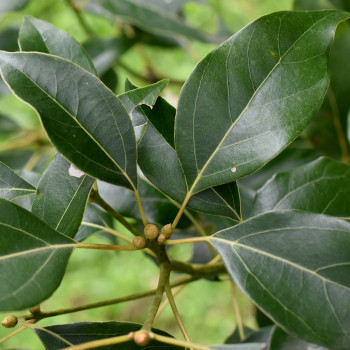Camphor tree

Scientific Name :
Cinnamomum camphora (L.) Presl
Synonym(s) :
Laurus camphora L.
Local/Common name(s) :
Karpuramaram, Camphor tree
Family :
Lauraceae
Habit :
Tree
Flowering/Fruiting Time :
Habitat :
Cultivated
Endemic :
Status (IUCN) :
Least concern (LC)
Distribution :
Native of Japan; widely cultivated
Nativity :
Exotic
Uses :
Medicinal
Description (Morphology) :
Trees large; branchlets slender, glabrous; terminal buds large, perulate, the outer bud scales glabrous, the inner sericeous. Leaves spirally arranged, glabrous, chartaceous to sub-coriaceous, ovate-elliptic to elliptic to subovate-elliptic, 1-5 x 3-10 cm, base acute or tapered-cuneate, both surfaces minutely reticulate or above smooth; main nerves slender. Petiole slender, 2-4 cm long. Panicles axillary, slender, glabrous, many-flowered, up to 10 cm long with few short branches. Pedicels 1-2 mm, obconical. Tepals ovate, acutish, fleshy, c. 2 mm. Stamens 1.5 mm long; anthers broad; inner anthers truncate, upper cells smaller, latrorse; gland large attached to the basal part of the filament. Staminodes stipitate. Style as long as the ovary with peltate triquetrous stigma. Fruit globose, slightly fleshy, 5-10 mm in diameter, seated on a shallow, thin cup, 3-5 mm in diameter at the apex, 1-2 mm deep, the basal part fleshy, obconical, usually not differentiated from the obconical pedicel, together 5-7 mm long.





